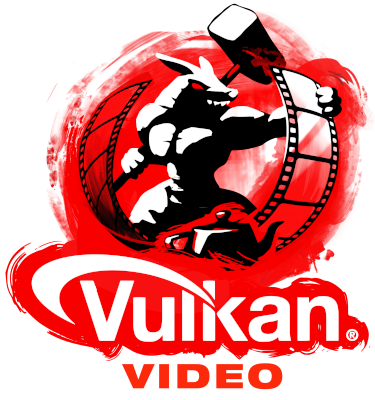
Vulkan Video enables developers to leverage hardware accelerated video compression and decompression through a powerful explicit API built on the open industry standard Vulkan API from the Khronos Group. This comes with the same level of flexibility and direct access to the underlying hardware that Vulkan developers are familiar with, including fine-grained control over resource management, synchronization, and execution scheduling. Leveraging these capabilities enables efficient, low-latency, and low-overhead video coding, therefore providing significant performance benefits compared to traditional APIs.
Vulkan Video is built as a set of extensions on top of Vulkan, making it is directly available to applications already using Vulkan on all driver implementations supporting these extensions. This tight also guarantees seamless and efficient interoperability with rendering algorithms, let that be the use of video textures rendered onto 3D surfaces, real-time encoding of rendering results, or any other combined rendering and video coding use case.
RasterGrid is proud to play a key role in the evolution of Vulkan Video since 2022. Our contributions include API design, specification editing, and the development of Vulkan Video support in ecosystem components such as the Vulkan Validation Layers and Vulkan Profiles.
Articles & Resources
- Video compression basics – Our blog post about the basics of video encoding and decoding from the perspective of Vulkan Video
- Unlocking the Power of Vulkan Video Encode – Our joint Khronos webinar about Vulkan Video Encode, AV1 Encode, and Quantization Maps
- An Introduction to Vulkan Video – Khronos Blog post about the provisional version of the Vulkan Video extensions
- Getting Started with Vulkan Video – NVIDIA Vulkan Video materials
Announcements & Press Releases
- 2025. Jul. – Khronos Announces Vulkan Video Encode Intra-refresh Extension
- 2025. Jun. – Khronos Announces Vulkan Video Decode VP9 Extension
- 2024. Nov. – Khronos Announces Vulkan Video Encode AV1 & Encode Quantization Map Extensions
- 2024. Feb. – Khronos Releases AV1 Decode in Vulkan Video with SDK Support for H.264/H.265 Encode
- 2023. Dec. – Khronos Finalizes Vulkan Video Extensions for Accelerated H.264 and H.265 Encode
- 2022. Dec. – Khronos Finalizes Vulkan Video Extensions for Accelerated H.264 and H.265 Decode
Vulkan Video Extensions
Vulkan Video is built as a set of extensions on top of Vulkan. You can find the list of these extensions with corresponding links to their proposal documents. The proposal documents provide an overview of the features and APIs introduced by the extensions. For the complete set of APIs and the full specification please refer to the Vulkan Documentation.
Core Framework Extensions
- VK_KHR_video_queue – Core Vulkan Video APIs (video profiles, video sessions, video session parameters, etc.)
- VK_KHR_video_decode_queue – Core decode APIs (video decode resources and commands)
- VK_KHR_video_encode_queue – Core encode APIs (video encode resources and commands)
Maintenance Extensions
- VK_KHR_video_maintenance1 – Inline video queries and video profile independent resources
- VK_KHR_video_maintenance2 – Inline video session parameters and other developer quality-of-life improvements
Video Decode Codec Extensions
- VK_KHR_video_decode_h264 – H.264 video decoding (Constrained Baseline, Main, High, High 4:4:4 Predictive profiles, progressive/interlaced)
- VK_KHR_video_decode_h265 – H.265 video decoding (Main, Main 10, Main Still Picture, SCC Extensions profiles)
- VK_KHR_video_decode_vp9 – VP9 video decoding (Profile 0, 1, 2, 3)
- VK_KHR_video_decode_av1 – AV1 video decoding (Main, High, Professional profiles, with or without film-grain)
Video Encode Codec Extensions
- VK_KHR_video_encode_h264 – H.264 video encoding (Constrained Baseline, Main, High, High 4:4:4 Predictive profiles, progressive-only)
- VK_KHR_video_encode_h265 – H.265 video encoding (Main, Main 10, Main Still Picture, SCC Extensions profiles)
- VK_KHR_video_encode_av1 – AV1 video encoding (Main, High, Professional profiles)
Video Encode Feature Extensions
- VK_KHR_video_encode_quantization_map – Quantization delta maps (aka QP / QP delta maps) and emphasis maps
- VK_KHR_video_encode_intra_refresh – Intra refresh (i.e. perform decoder refresh through a series of pictures)
Driver Implementations
* Open-source implementations available in the Mesa RADV, ANV, and NVK drivers




